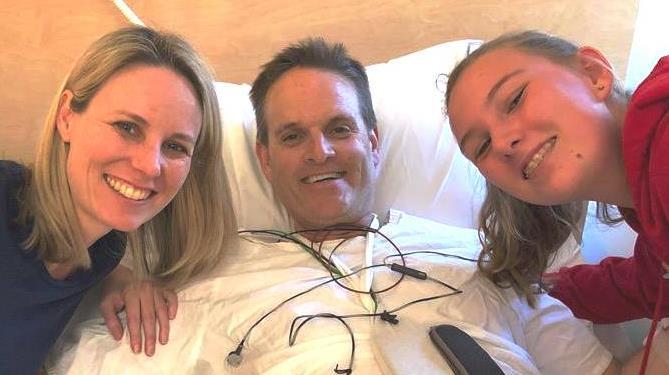
Medical Emergencies: How to Help Save a Life with CPR
“I was clinically dead for 19 minutes. CPR brought me back.”
A few years ago, one of our own picklers - Ian ‘Hutch’ Hutchinson, a fit and healthy NSW member and coach - suffered a sudden cardiac arrest while out cycling with his mate, Don.
Hutch had no warning signs. No pulse. He was clinically dead for 19 minutes. But thanks to Don’s quick thinking, a call to 000 and immediate CPR from nearby bystanders, Hutch survived - joining the lucky 9% who make it.
Here’s their story on Ch 7 Sunrise
That experience led Don & Hutch to launch CPRfriendly.org, a free resource dedicated to helping more people become CPR friendly and inspiring clubs like ours to build heart-smart communities.

The Heart-Stopping Facts
-
One life is lost every 20 minutes to sudden cardiac arrest in Australia
-
Average age of sudden cardiac arrest? Early 60's - just like the average age of pickleballers
-
Only 9% survive an out-of-hospital cardiac arrest
-
Every minute without CPR = 10% lower chance of survival
-
Brain damage begins after just 3–4 minutes without blood flow
-
80% of sudden cardiac arrests happen near family, friends, or teammates
-
70% of people don’t feel confident to help
-
99% agree CPR is important - but only 26% know what to do
Pickleball players should know how to perform CPR and use an AED because sudden cardiac arrest can happen to anyone, especially during physical activity. Quick action with CPR and an AED can significantly increase a person’s chances of survival.
Since pickleball is often played in community settings without immediate medical assistance, having players trained in these life-saving skills ensures a faster response in emergencies, potentially saving lives on the court.
In an Emergency: Would You Know What To Do?
It could happen at your venue. On your court. To a fellow player. Or to you.
But you can become CPR Friendly - in just minutes.
What is a Sudden Cardiac Arrest?
Cardiac arrest happens when the heart suddenly stops due to an electrical issue. The person collapses, becomes unresponsive, and either stops breathing or breathes abnormally (e.g., gasping). And only immediate CPR and a defibrillator (AED) can save them.
What To Do in a Sudden Cardiac Arrest – 'DRSABCD' in Action

D – Danger: Check for danger to yourself and others
R – Response: Talk/touch - any response in 5–10 seconds?
S – Send for help: Call 000 on speaker - they’ll guide you
A – Airway: Open and clear the airway
B – Breathing: If not normal → start CPR
C – CPR: 30 compressions (⅓ chest depth) + 2 breaths, 120 bpm
D – Defibrillator: Use an AED (e.g., CellAED in-venue kit) and follow voice prompts
What is an AED?
An AED, or Automated External Defibrillator, is a portable medical device that can analyze the heart’s rhythm and, if necessary, deliver an electric shock to help restore a normal heartbeat.
It's used in cases of sudden cardiac arrest, a condition where the heart unexpectedly stops beating. AEDs are designed to be simple to use - even by people without medical training - by providing clear, step-by-step voice or visual instructions.
They are commonly found in public places like gyms, schools, and sports facilities because quick access to an AED can greatly increase the chances of survival.
Want to Buy One?
Why not check out our recent article on getting a $500 grant from Alpha Sport to help buy one for your club, not-for-profit organisation, or charity?
USEFUL VIDEOS TO WATCH:
Watch how CellAED works
Free CPR & AED videos at CPRfriendly.org

Support CPR Friendly
Hutch also founded Pickleball Coaching Australia (PCA), with profits from coaching and paddle sales supporting CPRfriendly.org’s mission.
Improve your game and help save lives at the same time.
 Related Resources:
Related Resources:
[Words by: CPRFriendly]